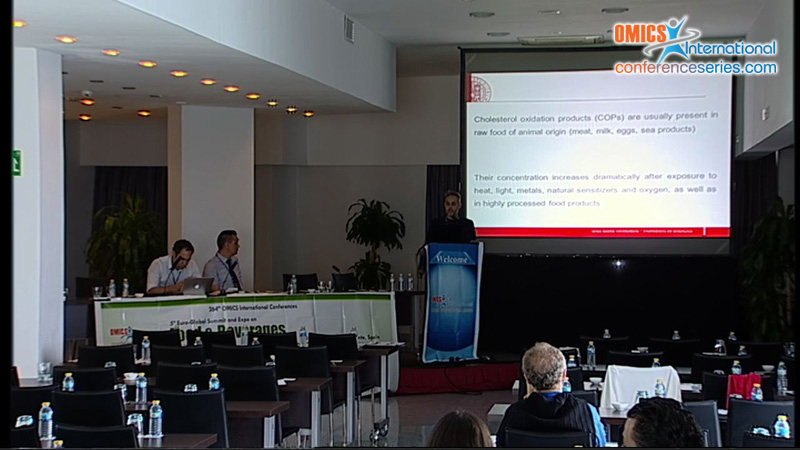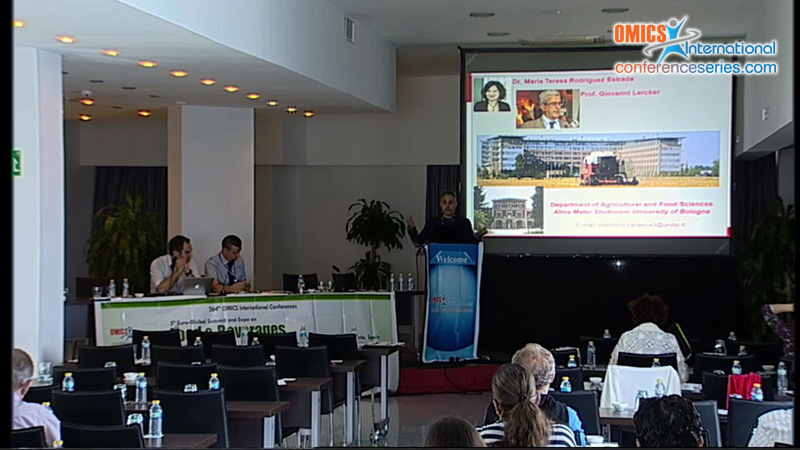
Vladimiro Cardenia
University of Bologna
Italy
Title: Cholesterol photosensitized oxidation products in food systems
Biography
Biography: Vladimiro Cardenia
Abstract
Lipid oxidation is one of the main chemical degradations occurring in biological and food systems and leads to the formation of compounds that are related to aging and various chronic and degenerative diseases. The extent of oxidation will depend on the presence of antioxidants/pro-oxidants, the unsaturation degree of fatty acids, and environmental conditions. Lipid oxidation can also affect other molecules such as cholesterol leading to formation of its oxidation products (COPs), which exert a strong impact on the lipid metabolism and are involved in various chronic and degenerative diseases and disturbance of cell functionality. Additionally, the formation of COPs can be particularly favored in the presence of light and photosensitizers. This work evaluated the light sensitized cholesterol oxidation in different matrixes (e.g. beef, pork, horse, turkey and sardine muscle). In the retail market, fresh slices of meat or fish are usually displayed in refrigerated vessels wrapped with plastic film and are exposed to a fluorescent light. Under these conditions, COPs can reach the 1.3% of oxidized cholesterol. In order to reduce the oxidative process, different strategies could be used (feeding the animals with antioxidants, or by spraying the muscle food with lipid- or water-soluble antioxidants before packaging). However, the combined use of alternative protective packaging, appropriate lighting conditions and modified atmosphere with low oxygen content, can efficiently prevent photoxidation without modifying the food product composition and sensory properties.
Speaker Presentations
Speaker PDFs
Speaker PPTs Click Here




